
A vacuum cleaner, also known simply as a vacuum, is a device that uses suction, and often agitation, in order to remove dirt and other debris from carpets and hard floors.

Robert Bosch GmbH, commonly known as Bosch, is a German multinational engineering and technology company headquartered in Gerlingen, Germany. The company was founded by Robert Bosch in Stuttgart in 1886. Bosch is 94% owned by the Robert Bosch Stiftung, a charitable institution. Although the charity is funded by owning the vast majority of shares, it has no voting rights and is involved in health and social causes unrelated to Bosch's business.
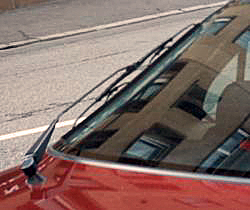
A windscreen wiper or windshield wiper is a device used to remove rain, snow, ice, washer fluid, water, or debris from a vehicle's front window. Almost all motor vehicles, including cars, trucks, buses, train locomotives, and watercraft with a cabin—and some aircraft—are equipped with one or more such wipers, which are usually a legal requirement.
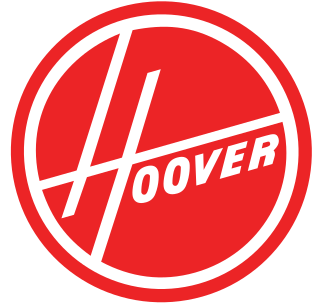
The Hoover Company is a home appliance company founded in Ohio, United States, in 1915. It also established a major base in the United Kingdom; and, mostly in the 20th century, it dominated the electric vacuum cleaner industry, to the point where the Hoover brand name became synonymous with vacuum cleaners and vacuuming in the United Kingdom and Ireland. Hoover North America was once part of Maytag, but was sold by Maytag's new owners Whirlpool Corporation in 2007 to Hong Kong multinational manufacturing company Techtronic Industries for $107 million. Hoover International had already split from Hoover North America in 1993, and was acquired by Candy in 1995, which was acquired by Haier in 2019.

Automobile accessory power can be transferred by several different means. However, it is always ultimately derived from the automobile's internal combustion engine, battery, or other "prime mover" source of energy. The advent of high-powered batteries in hybrid and all-electrical vehicles is shifting the balance of technologies even further in the direction of electrically powered accessories.

The Honda Legend is a series of V6-engined executive cars that was produced by Honda between 1985 and 2021, and served as its flagship vehicle. The Legend has also been sold under the Acura Legend, RL and RLX nameplates — the successive flagship vehicles of Honda's luxury Acura division in North America from 1986 until 2020.
Lucas Industries plc was a Birmingham-based British manufacturer of motor industry and aerospace industry components. Once prominent, it was listed on the London Stock Exchange and was formerly a constituent of the FTSE 100 Index. In August 1996, Lucas merged with the American Varity Corporation to form LucasVarity.
Federal-Mogul Corporation is an American developer, manufacturer, and supplier of products for automotive, commercial, aerospace, marine, rail, and off-road vehicles, as well as industrial, agricultural, and power-generation applications. It was acquired in February 2022 by Apollo Global Management.

Mary Elizabeth Anderson was an American real estate developer, rancher, viticulturist, and most notably the inventor of what became known as the windshield wiper. On November 10, 1903 Anderson was granted her first patent for an automatic car window cleaning device controlled from inside the car, called the windshield wiper. Her patent didn't get far as she got no manufacturing firms to agree to make her invention.
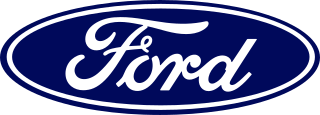
Ford Motor Company Limited, trading as Ford of Britain, is a British wholly owned subsidiary of Ford Technologies Limited, itself a subsidiary of Ford International Capital LLC, which is a subsidiary of Ford Motor Company. Its business started in 1909 and has its registered office in Laindon, Essex. It adopted the name of Ford of Britain in 1960.
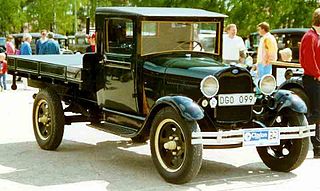
Ford Model AA is a truck from Ford. As the Model T and TT became obsolete and needed to be replaced, Henry Ford began initial designs on the Model A and Model AA in 1926. Basic chassis layout was done rapidly and mechanical development was moved forward quickly. Body design and style was developed and then outsourced to various body manufacturers, including Briggs and Murray. The designs of the Model A shared parts and materials with the Model AA Ford, notably the body, engine and interior. The AA usually received plainer interiors than their car counterparts. The Model AA followed similar design changes to the Model A during the AA's four years in production, often delayed anywhere from three to nine months. The mechanical changes and upgrades were done during production of the vehicles. Body changes that occurred between 1929 and 1930 were also integrated into AA production, but leftover parts were used longer in the heavy commercial trucks.

Windshield washer fluid is a fluid for motor vehicles that is used in cleaning the windshield with the windshield wiper while the vehicle is being driven.

The PACE Award is an annual award from Automotive News. The focus of the award is an innovation (i) developed primarily by a supplier, (ii) that is new to the automotive industry, (iii) that is in use, and (iv) that "changes the rules of the game". Awards have been given for products, materials, processes, capital equipment, software and services. A panel of independent judges from industry, finance, research, and academia choose finalists from the initial applicants, make site visits to evaluate the innovation, and then gather to select winners, independent of the sponsors. Winners to date include suppliers from Japan, Korea, China, the US, Canada, Brazil, Germany, France, Italy, Poland and other European countries. Among the most awarded companies over the years are BorgWarner, Delphi Automotive, Federal-Mogul, Valeo and PPG Industries as well as Robert Bosch GmbH, Gentex Corporation, and Siemens.

Robert William Kearns was an American mechanical engineer, educator and inventor who invented the most common intermittent windshield wiper systems used on most automobiles from 1969 to the present. His first patent for the invention was filed on December 1, 1964, after a few previous designs by other inventors had failed to gain any traction in manufacturing.

Ascot-Pullin Motorcycles was a British motorcycle manufacturer founded by Cyril Pullin as the Ascot Motor & Manufacturing Co Ltd. at Letchworth, Hertfordshire in 1928. An inventor and winner of the 1914 Isle of Man TT, Pullin had been developing ideas for motorcycle designs since 1920 with Stanley Groom, and had patented a two-stroke engine motorcycle with pressed sheet metal frame and forks. After leaving Douglas the first time, Pullin worked with Groom again to refine his ideas and develop and patent the Ascot-Pullin motorcycle. Fewer than 500 were built and sales were poor, resulting in the company's liquidation in 1930.

Trico Plant No. 1 is a historic windshield wiper factory building located in Buffalo, New York. It is an example of a style of architecture sometimes referred to as the daylight factory, a style for which Buffalo is well known. The building was mostly constructed in the 1920s and 1930s of reinforced concrete and features curtain walls of metal sash windows and brick spandrels, although a portion of the plant incorporates an historic brewery building from the 1890s. It was the original home of Trico Products Corporation, the first manufacturer of windshield wipers, and was an important factory during a period when Trico was the largest employer in the city of Buffalo. The building is also known for once being the office of John R. Oishei (1886–1968), the company's founder and an industrialist who went on to become one of the most important philanthropists in the Buffalo Niagara Region.

The Lincoln L series is the first automobile that was produced by the Lincoln Motor Company. Introduced in 1920, the L series would continue to be produced after the bankruptcy of Lincoln in 1922 and its purchase by Ford Motor Company.

The Buffalo area economy consists of a mix of industrial, light manufacturing, high technology, and service-oriented private sector companies. Instead of relying on a single industry or sector for its economic future, the region has taken a diversified approach that has the potential to create opportunities for growth and expansion in the 21st century.
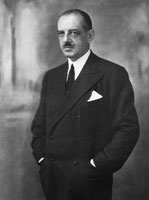
John R. Oishei was a businessman who founded Trico products and became one of Buffalo’s wealthiest citizens and philanthropists.
Charlotte Bridgwood was a Canadian vaudeville performer and inventor. She is the mother to Florence Lawrence, regarded as the “first movie star” and inventor of the turn signal, traffic light, and brake light.

















